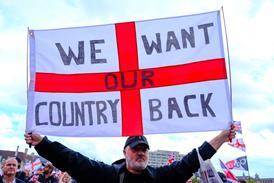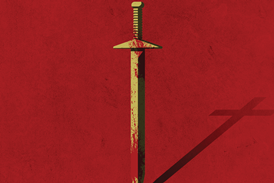If you read the Christmas story in isolation, you will miss the beauty of the Bible’s bigger picture, says Jo Swinney
Biblical literacy in the UK is at shamefully low levels. In a 2014 YouGov survey, around a third of respondents thought the Harry Potter storyline originated in the Bible, while just under half had no idea that Noah’s ark did.
Forty three per cent of children aged eight to 15 had not encountered the story of Jesus’ death and resurrection. However, thanks to school nativities, Christmas carols and the odd religiously-themed Christmas card, most people still have a good grip of the events surrounding the birth of Jesus. Told in the Gospels of Matthew and Luke, the story is covered in a mere 120 verses: a young Mary is visited by an angel and mysteriously becomes pregnant. Her horrified fiancé, Joseph, is only convinced to stick with his betrothed by a heavenly dream. Mary visits an older relative and is reassured that she is doing God’s will. They journey together to Bethlehem for a census, discover there is no room at the inn, and the baby Jesus is born in a manger. While there, they are visited by some shepherds and wise men from the East, whose arrival alerts King Herod to a potential rival.
What is the puzzle? you might ask. It is all so very familiar and, somehow, contained in its own tight narrative structure, with a clear beginning, middle and end.
But this short, albeit earth shatteringly significant story belongs within a much bigger one.
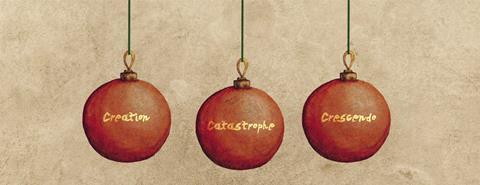
Let’s consider three big biblical themes, and how they fit around the puzzle piece of Christmas, together creating a much fuller picture: creation, catastrophe and crescendo. All of this may seem rather erudite and remote as we make our preparations for Christmas 2021 in the dark and drizzle of a UK winter. But we too fit into this puzzle. And as we come to see ourselves in the picture, our experience of 25 December and the days around it will become richer than a Christmas pudding slathered in brandy butter.
CHRISTMAS AND CREATION
How often do we hear that Jesus was born to save us from our sins, without even wondering why he’d do that, given how very badly God’s people had messed up by the year zero BC? The Christmas story, taken out of context, becomes all about the sin – and there is enough of it still around to smear the whole, pretty nativity scene in filth. As we skid into the buffers of another year, 4.3 million children in the UK are living in poverty, half a million more than five years ago. We have just under 80,000 people in our prisons. Issues relating to drugs and alcohol are at a record high. And we are continuing to overconsume as
though we aren’t living in a climate crisis already, causing untold human suffering and mass extinction around the world.
Jesus didn’t spring into existence at his birth or cease to be once he no longer walked on earth. The world he came to save is the world he created. The Christmas story doesn’t begin with Gabriel’s announcement or at the point at which Jesus was conceived in Mary’s womb. It begins where John’s Gospel does, with the Word, who was there in the beginning: “Through him all things were made; without him nothing was made that has been made” (John 1:3).

This is a vital piece of the puzzle because, without it, we are left without much clue as to why God would choose to divest himself of power, privilege and comfort and take on vulnerable human flesh. When we return to where it all began, however, it becomes crystal clear. Creation was made by God to express and reflect his glory – which, for all the damage we’ve done to it, it still does; it was made good: not just averagely good, but exceedingly, overwhelmingly, gorgeously good. For all these reasons, it is worth paying the ultimate price to save.
We often have a discussion in our family, around October time, about whether we really ought to do Christmas differently this year. My Christmases have always involved feasting on turkey, stuffing, gravy, vegetables, pigs in blankets, mince pies, chocolates, puddings, Christmas cake and tangerines. They have included piles of gifts, people, cracker pulling, carol singing, board game playing and a big, sparkly Christmas tree. Is it all just too excessive, a sell-out to consumerism and the secularisation of a sacred festival? I am sure we are right to ask the question, and there are definitely ways we could simplify things, particularly when it comes to the mountains of wrapped stuff we give each other. However, a hearty celebration is perfectly appropriate for the marking of Jesus’ birth. The incarnation is endorsement of the intrinsic goodness of this earthy life of ours, with its eating and drinking, feasting and fasting, workdays and Sabbath rest.
This Christmas, notice with gratitude the abundant red holly berries, more than enough to feed our winter populations of feathered friends. Smile at every person who jostles you at the checkout or cuts you up in traffic: they are so loved by God that he was born a baby to rescue them. Enjoy every mouthful of your Christmas dinner: God made a world full of delicious food and has yet again given us our daily bread (and more). Start the Christmas story at Genesis 1 and see what it does to the picture.
CHRISTMAS AND CATASTROPHE
Hot on the heels of creation came the Fall, and with it, all manner of horrors. You need to be feeling strong to read some sections of the Old Testament, with their gory accounts of the many creative ways humans can harm themselves, each other, their environment and God himself.
The birth of Jesus was a sign of blazing hope that all was not lost: the longed-for saviour of the world had finally come. Every best intention we have around our Christmas festivities is symbolic of that hope. We light candles and string up fairy lights to pierce the darkness as Christ did. We give gifts in memory of those he received. We gather with family and friends, his love for us inspiring us to love spikey old Aunty Eileen and the neighbours’ son who is always drunk.
Is it any wonder there is no time of year when the cold truth of our lived reality hurts quite so badly? There is a gaping chasm between the scenes played out on supermarket ads and what goes on behind closed doors. This year, we are a nation suffering mass grief and trauma from Covid-19. Our economy and health system are looking shaky. We are anxious, exhausted and lonely. We are angry, sad and lost. We may well ask: what help was that baby’s birth after all? Has Christmas got any relevance to us today?
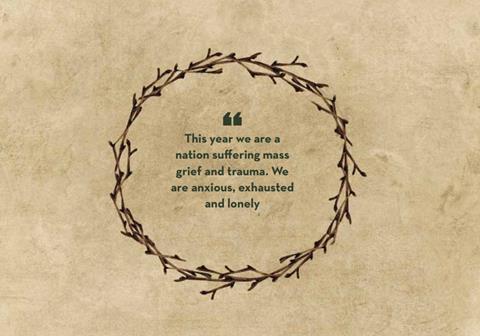
Firstly, strip away the tinsel and glitter and have another look at the story: a single mother gives birth, a long way from home in an animal shed. Shortly after, a mass slaughter of all the baby boys unfortunate enough to be born around the same time as Jesus takes place. His early years are spent as a refugee in a foreign land.
As a child, December 26 was, consistently, the worst day of the year for me. The year built, in fizzy anticipation, towards my birthday on 18 December and the glories of Christmas Day a week later, so the crash was inevitable, I suppose. I would wake on Boxing Day feeling flat and empty, as though nothing good would ever happen again.
The people of Israel had waited for a Messiah for hundreds of years. Prophetic clues were passed down from generation to generation as they scoured the horizon for his arrival. He would be born of a virgin (Isaiah 7:14), in Bethlehem (Micah 5:2), from the tribe of Judah (Genesis 49:10) and he would spend a season in Egypt (Hosea 11:1). And then Jesus was born and, while there is a sense of climax in the story here, the story has not ended. It goes on. And on. We’re still in it today and, on particularly grey days when pain and disappointment levels are high, the birth of Christ can seem like an insignificant blip in history. But it isn’t.
THE CHRISTMAS CRESCENDO
Just as the Christmas story begins at creation and not conception, its crescendo is not a crowning head but a coming glory. The narrative stretches from the beginning of time to it’s conclusion, and its climax is the fulfilment of all God’s promises in Jesus. The best picture we have of what that will look like is in the book of Revelation. Exiled to the island of Patmos, the apostle John experienced visions of Jesus: “His face was like the sun shining in all its brilliance. When I saw him, I fell at his feet as though dead. Then he placed his right hand on me and said: ‘Do not be afraid. I am the First and the Last. I am the Living One; I was dead, and now look, I am alive for ever and ever! And I hold the keys of death and Hades’” (Revelation 1:16-18).
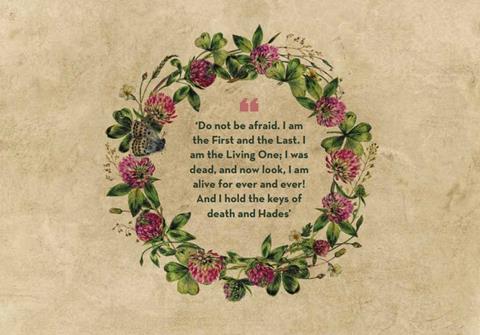
The baby born in a manger grew up into the man called Jesus. He brought healing and comfort to many, made lepers whole, the lame walk, gave sight to the blind and restored loved ones to the grieving. He showed us God’s heart for the suffering is compassionate and full of love. But, even then, there were untold multitudes who couldn’t get near him, who missed him by metres or minutes and whose suffering was untouched. The time hadn’t come for a definitive end to trouble on earth. And it still hasn’t.
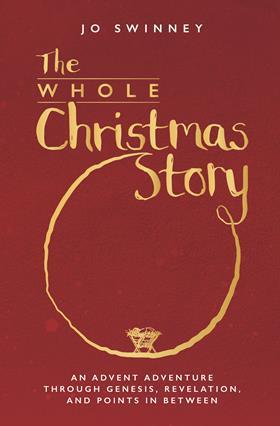
If you, like me, drink gallons of mulled wine at this time of year, perhaps you can relate to this story: Jesus told a woman at a well in Samaria that what she needed was not mulled wine, hot chocolate with a dash of Baileys, or even water, but living water that would “[well] up to eternal life.” (John 4:14) Thirst is the most powerful of human urges; we’ve been created with a built-in craving for what we need to stay alive. But Jesus identified a far greater need – for a never-ending life with God. Our spiritual thirst drives us to seek God out – and he has promised to be found. While we live in “the first earth” (Revelation 21:1), we will cross vast, dry deserts in our spiritual experience – times when we can’t see, feel, hear or sense God in any way at all. Our raging thirst goes unquenched. But, if we persist, we will eventually be satisfied by the “spring of the water of life” (Revelation 21:6), whether here or in the world to come.
We are used to a Christmas puzzle made up of pieces detailing angels, donkeys, shepherds, wise men and a baby in a manger. But these extra pieces – creation, catastrophe and crescendo – create a picture that not only makes sense of these other, rather random details, but the details of our own lives too, and the universe itself. In the end, it all fits together rather perfectly.
Jo Swinney’s latest book, The Whole Christmas Story (BRF) is out now






